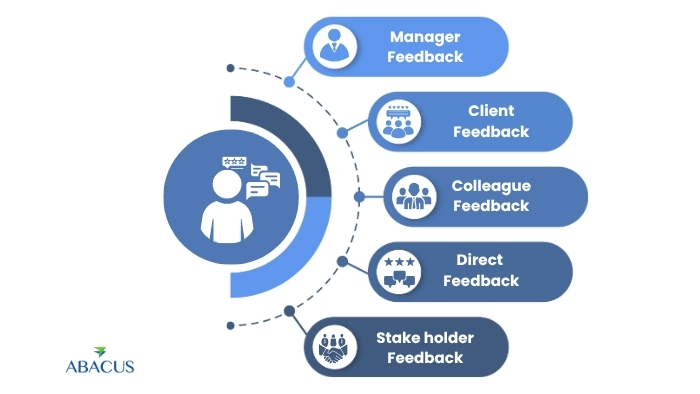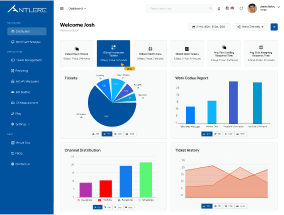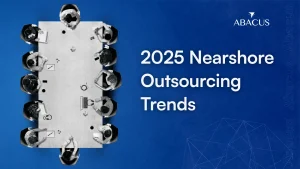What Is 360 Feedback and How Does It Work?
At its core, 360 feedback also known as a 360 degree evaluation is a process that collects structured feedback from multiple sources. Instead of relying on a single point of view, like a manager’s assessment, employees receive insights from various stakeholders they interact with.
A 360 degree feedback survey often includes feedback categories such as communication, teamwork, leadership, adaptability, and problem-solving. Some enterprises go even further and employ a 360-degree leadership assessment that gauges how managers or executives are viewed by staff at various levels of the corporate ladder.
To facilitate this system, companies implement 360 degree feedback software. Software such as this gives employees and managers an easy way to take surveys, view reports and look at trends. An automatic system 360 feedback tool eliminates the need for a human intermediary and improves efficiency, as once when administered manually: Maintains Confidentiality Minimizes Bias automated gathering of large-scale feedback seeking.
Traditional Reviews: A Familiar but Flawed System
Traditional performance reviews remain the default in many organizations. They usually involve a private meeting between one of your employees and you (or whoever their manager is), where performance against targets is assessed. Although systematic, those reviews tend to miss the forest for the trees.
For example, someone might be excellent at working with others as a team, but if their manager isn’t in contact during those moments of success and strength, it may never even be acknowledged. Not only that but traditional reviews are typically once a year, so often miss out on the progress or bad habits that develop over 12 months.
Another issue lies in bias. Managers might give in to unconscious bias toward employees they see the most or concentrate too closely on recent events instead of over the course of the whole review period. This results in a warped portrayal of performance that leads to staff feeling unappreciated or misunderstood.
Why 360 Feedback Is More Relevant Today?
The contemporary work environment is collaborative, agile and dynamic. Employees don’t just work for one manager – they regularly collaborate with multidisciplinary teams, on global projects, and among other departments.
Measuring performance in terms of a single perspective is no longer feasible.
360 Feedback Software 360 degree feedback is an invaluable tool that offers chain restaurants constructive input from all angles. That makes for a culture of transparency, accountability and constant improvement.
Research has found that companies with 360 evaluations have higher employee engagement and lower turnover, because employees feel they are being recognized for their contributions by more than just their direct managers. 
A Side-by-Side Comparison: 360 Feedback vs. Traditional Reviews
If you are interested in knowing more about the differences take a look at this comparison of both system:
Feature | Traditional Reviews | 360 Feedback Software |
Feedback Source | Manager only | Peers, managers, subordinates, self |
Frequency | Annual/Semi-annual | Ongoing or project-based |
Perspective | Limited | Holistic |
Employee Development | Limited growth insights | Rich feedback for development |
Bias Risk | Higher | Lower, due to multiple voices |
Engagement | Often low | Higher employee involvement |
Scalability | Suitable for small teams | Effective for large organizations |
The following table illustrates why companies are more closely adopting the use of 360 reviews as a component to talent management initiatives.
Addressing the Limitations of 360 Reviews
Of course, no system is perfect. Critics of 360-degree feedback claim that it can result in ‘feedback fatigue’, where recipients become overwhelmed by the sheer volume of feedback. Others are concerned that without some kind of rubrics, peers can offer subjective or unhelpful feedback.
Hence why companies need to implement a formal 360 feedback tool. Tools like 360-degree feedback software. Create anonymity, guarantee constructive feedback and report on the trends rather than individual remarks. In doing so, they translate raw feedback into actionable insights.
The Best Use Cases for 360 Feedback Tools
360 reviews are not industry-specific but can be particularly effective for industries that depend on leadership, teamwork and soft skills.
Here are some of the most compelling use cases:
- Leadership development: A 360 degree leadership assessment to see how you are perceived in the eyes of your peers, teams and stakeholders.
- Team Growth: You can encourage greater teamwork by showing what skills the team is strong on and blindspots a 360 proves.
- Employee engagement: Employees are more apt to stay engaged and committed when they feel their voice matters in the review process.
These situations demonstrate why the 360 review process is known to be a game-changer, as opposed to the more traditional kind of performance evaluation. 
When Traditional Reviews Still Matter
It should be said that traditional reviews aren’t totally irrelevant, after all. In smaller companies or specific individuals with well-circumscribed sets of responsibilities, a 360 evaluation might seem excessive. When paired with measurable performance outcomes (like sales numbers, project delivery times, or customer satisfaction scores), traditional reviews can also still be helpful.
Indeed, the most successful organizations tend to combine both approaches. They rely on traditional reviews to set and track goals, for structured performance tracking but also a 360 view is extremely beneficial as it will provide you with deeper development insights.
What’s the Future of Performance Reviews?
Then, what exactly is a 360 review, and does it replace traditional systems altogether? The answer is nuanced. Traditional performance reviews have their place in formal appraisals, but 360 feedback software is the future, a future where feedback is continuous, all-inclusive and aimed at growth.
That’s especially important when so many companies are adopting a remote-hybrid work model. With tools like 360-degree feedback systems, managers can ensure employees are being evaluated fairly, whether they’re working in person or remotely.
Conclusion: Abacus Survey Solution for Modern Organizations
Ultimately, performance management is more than about evaluations, it’s about cultivating a culture of growth, accountability and trust. Although traditional reviews have their own merits, the true differentiator is implementing a 360 feedback software which offers deeper insights and more actionable results.
Abacus Survey Solution is here to fill the gap. Built for scale, security and ease of use, it enables companies to run 360 feedback assessments smoothly. Whether you are carrying out a 360 feedback review, manager 360 evaluation or companywide culture survey Abacus Survey Software makes the process easy yet valuable.
By abandoning the antiquated review cycle, companies can have workplaces where performance truly means something not once a year but every single day.

Author









